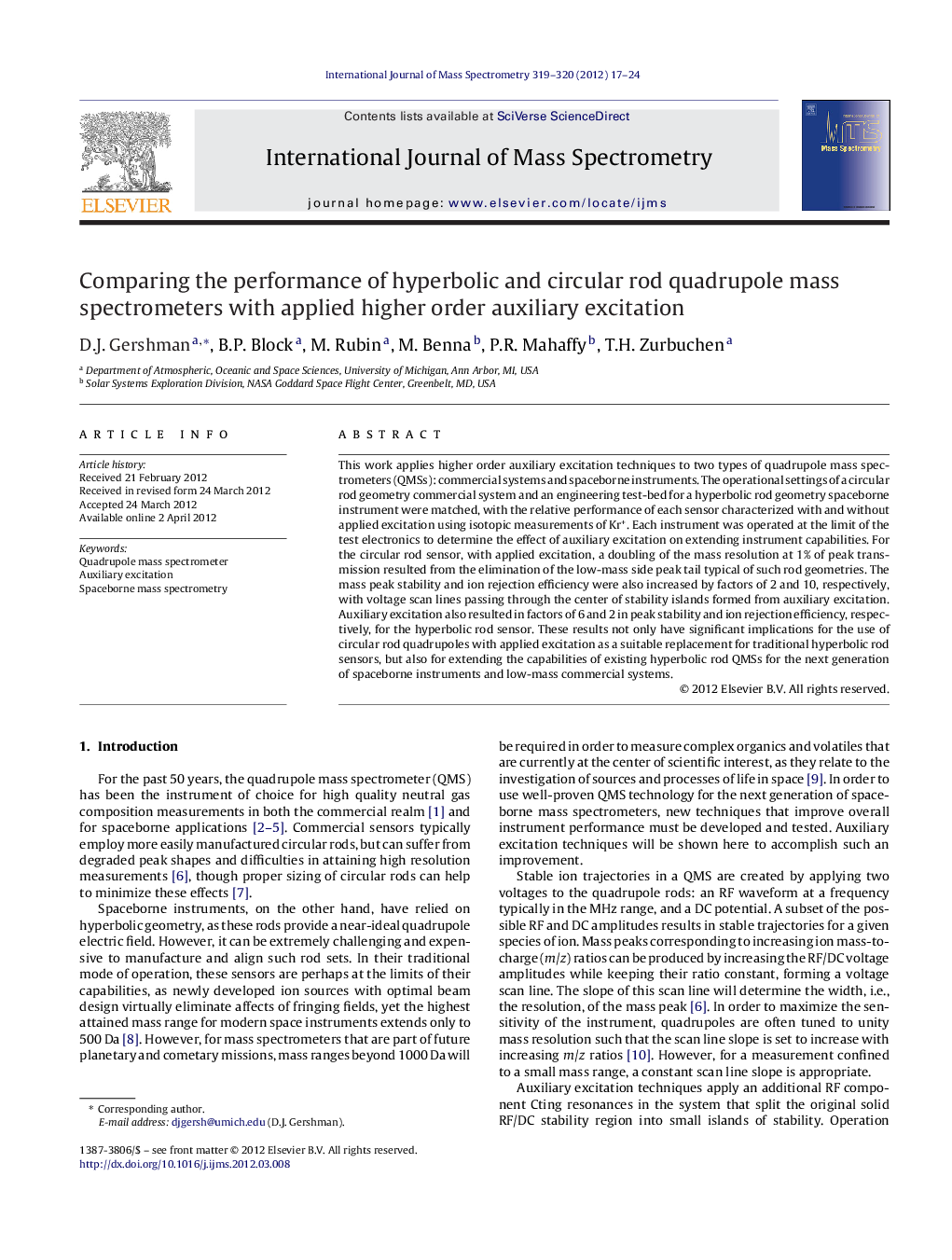| Article ID | Journal | Published Year | Pages | File Type |
|---|---|---|---|---|
| 1192782 | International Journal of Mass Spectrometry | 2012 | 8 Pages |
This work applies higher order auxiliary excitation techniques to two types of quadrupole mass spectrometers (QMSs): commercial systems and spaceborne instruments. The operational settings of a circular rod geometry commercial system and an engineering test-bed for a hyperbolic rod geometry spaceborne instrument were matched, with the relative performance of each sensor characterized with and without applied excitation using isotopic measurements of Kr+. Each instrument was operated at the limit of the test electronics to determine the effect of auxiliary excitation on extending instrument capabilities. For the circular rod sensor, with applied excitation, a doubling of the mass resolution at 1% of peak transmission resulted from the elimination of the low-mass side peak tail typical of such rod geometries. The mass peak stability and ion rejection efficiency were also increased by factors of 2 and 10, respectively, with voltage scan lines passing through the center of stability islands formed from auxiliary excitation. Auxiliary excitation also resulted in factors of 6 and 2 in peak stability and ion rejection efficiency, respectively, for the hyperbolic rod sensor. These results not only have significant implications for the use of circular rod quadrupoles with applied excitation as a suitable replacement for traditional hyperbolic rod sensors, but also for extending the capabilities of existing hyperbolic rod QMSs for the next generation of spaceborne instruments and low-mass commercial systems.
Graphical abstractFigure optionsDownload full-size imageDownload high-quality image (249 K)Download as PowerPoint slideHighlights► We apply higher order auxiliary excitation to quadrupole mass spectrometers. ► Mass resolution, stability, and peak shape improve for circular rod sensors. ► Stability and ion peak shape improve for hyperbolic rod sensors.
